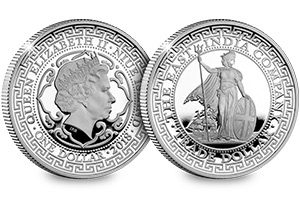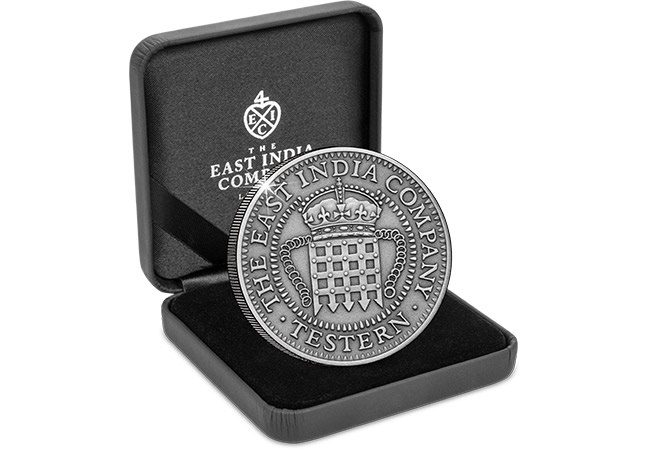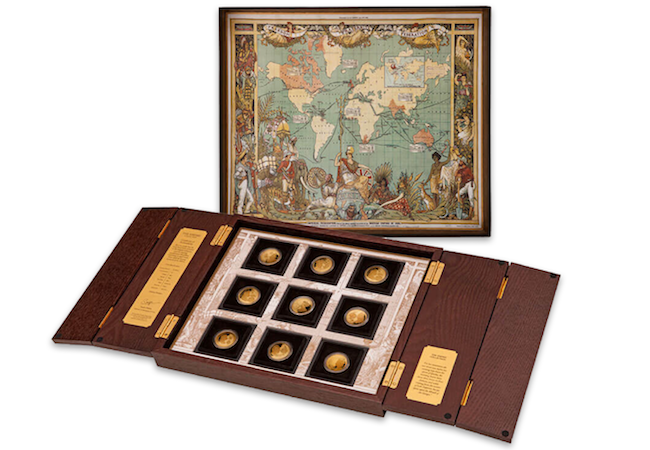Posts Tagged ‘East India Company’
Globalisation – the coin that launched it all…
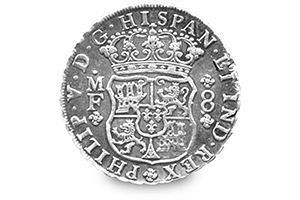
The 1739 ‘Spanish Silver Trade Dollar’.
While I was watching “Civilisations” on the Beeb last week they mentioned how the introduction of the Trade Dollar was the first step in globalisation – this got me thinking, so I made a cup of tea and looked into the history of the Trade Dollar and it truly is a fascinating tale.
Way back in the 16th Century, the first trading currency came to be because of the popularity of the silver Spanish dollar (better known as pieces of eight – yes those!) in China and they created the “Dragon Dollar” or “Silver Dragon” which were not only used in China, but also became the preferred currency for trade with their neighbours.
In the 19th Century, the Chinese were defeated in the First Opium War and forced to open their ports to foreign trade. The British merchants from The East India Company were now able to take advantage of the silk, porcelain spice and tea trade in the Orient.
The Rise of the British Trade Dollar
Now, with so many routes to trade it made sense for each country’s traders to mint their own coins, from their own supplies of silver. BUT these new silver trade coins all had to be minted to the same specification as the famous Spanish Dollar weighing in at approximately 27g and minted in 0.900 silver. The trade dollar was truly born and trading was made easier for the world – hence the movement of goods (and people) became more prevalent and “globalisation” started.
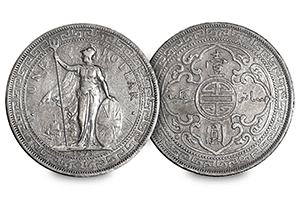
The 1895 British Trade Dollar.
Our British Trade Dollar was first minted from 1895 and designed by George William De Saulles – a British coin with an eastern feel, it was exclusively for use in the Far East. For the first time on a coin, it showed a helmet-wearing Britannia holding a trident and the British shield with a merchant ship in the background.
Although The East India Company had been trading since the early 1600s, the introduction of the British Trade Dollar secured them as the single most powerful economic force of its time – tea, silks, spices and so much more travelling across the world on their ships not only for Britain, but also the rest of the Empire and Commonwealth. Without the original version of this coin we would be waiting for a cup of tea for a very long time!
A 21st Century spin on a 19th Century coin
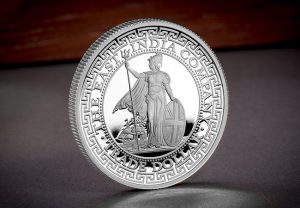
The 2018 East India Company 1oz Silver Proof Trade Dollar.
This year, The East India Company is launching a coin that has been faithfully inspired by the original British Trade Dollar – The East India Company 2018 Trade Dollar 1oz Silver Proof Coin features Britannia surrounded by an oriental pattern. The obverse for the first time, displays the Ian Rank-Broadley effigy of Her Majesty Queen Elizabeth II surrounded by an arabesque cartouche.
A Faithful nod in these modern times to the coin that started it all.
_____________________________________________________________________________________________________
If you’re interested:
You can own the 2018 East India Company 1oz Silver Proof Trade Dollar, but you’ll have to be quick as just 2,500 have been issued worldwide! Click here to secure yours now >>
The story behind England’s first colonial coinage…
The story behind England’s first colonial coinage is one that few people know about. It begins with the most influential company in world history – The East India Company…
The East India Company today are producers and distributors of quality, exclusive and exotic goods with a 400 year legacy through its trade history, which built the British Empire.
Originally, the East India Company was a band of pioneering merchants who were granted a Royal Charter by Elizabeth I in 1600 to explore the East Indies and bring back exotic goods to the Regal West. In doing so they established new trade routes and broke down the barriers of the world. They established Singapore and Hong Kong, held Napoleon captive in St. Helena and sent the tea that was destroyed at the Boston Tea Party.
The consequences of the Company’s actions are the very fabric of our Commonwealth.
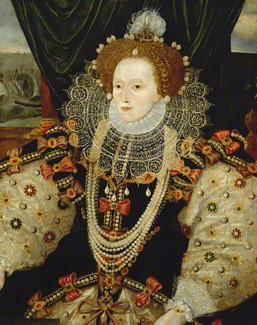
Queen Elizabeth I
England’s very first colonial coinage – struck for the company’s first voyage
In 1601, Queen Elizabeth I signed a Royal Charter awarding The East India Company the right to monopoly on trade in the East.
On signing the Royal Charter, Queen Elizabeth I instructed The Royal Mint to strike England’s very first colonial coinage – the Testern coin. Struck specifically for The Company’s first voyage to the East, the Testern was the very first currency that was minted specifically for trade outside of England.
Following the defeat of Spain in the Spanish Armada in 1588 and after the death of Prince Philip of Spain, the British colonial era of empire commenced and the start of 270 years of trade and conquest began.

The Originial Testern Coin
It’s believed that Queen Elizabeth I insisted on her own trade coinage as means of demonstrating that she was just as powerful as the King of Spain, which would only be effective if it was based on the prevailing international trade coin of the time – the Spanish Real. So, she introduced a coin that was minted in the exact same specification as the Spanish 8 Real denomination, commonly known as ‘Pieces of Eight’. This coin was formally named the Testern but came to be known as ‘Portcullis Money’ due to its unique Portcullis design.
The end of the Testern
Elizabeth I insisted that The East India Company carried the new Testern coins on each voyage, as means of exhibiting her power overseas. Just over £6,000 worth of ‘Portcullis Money’ was loaded onto the vessels of Sir James Lancaster VI’s fleet – the first fleet of The Company. When the fleet arrived in the East many of the coins were melted down, and very few returned to England. In fact, those that did were presented to The Company’s shareholders.
A coin found only in museums

The 2017 Silver Testern Coin
Today, you will only find these coins in museums and even then only a very small number of the Testern ‘Portcullis Money’ coins will be exhibited across the world.
This year, The East India Company and St Helena government have issued the Testern coin in Silver featuring a design based on the original ‘Portcullis money’ and struck in the same weight specification as the Testern coins. Only the second ever minting of Portcullis Money, the design features the iconic portcullis engraving just as its 1601 predecessor.
If you’re interested…
Fully approved by Her Majesty Queen Elizabeth II and strictly limited to just 10,000 coins worldwide, you can own the 2017 Testern Silver coin today if you’re quick.
Why these 9 gold coins tell a story that changed the world…
This year, a unique set of nine pure gold coins has been released to mark the prestigious heritage of the East India Company, still trading after 417 years.

The Empire Collection
At its peak the British company single-handedly accounted for half the world’s trade. They minted their own currency, started the mass production of tea for export in India and transformed dining tables in the West forever by introducing new exotic ingredients and flavours.
But despite the Company ceasing operations in 1874, it had changed the way the world traded. The Times commented ‘It accomplished a work such as in the whole history of the human race no other trading Company ever attempted, and such as none, surely, is likely to attempt in the years to come.’
Just 500 gold coin sets issued to mark this history

All nine 24-carat gold coins
Now The East India Company has issued The Empire Collection, a brand new, limited edition set of nine 24-carat gold coins which tell the story of the company from its foundation in 1600.
Each coin features a depiction of a British monarch who ruled during the Company’s first period of operations – from Queen Elizabeth I to Queen Victoria –alongside a key historic symbol.
Only 500 sets will ever be struck, making each of these coins immediately scarce in comparison to say, the Gold Sovereign, of which 10,500 will be issued this year.
Nine British Monarchs – Nine Gold Coins
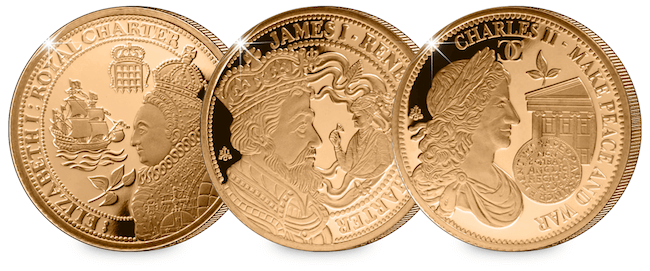
Coins from left: Elizabeth I, James I and Charles II
The first three coins of the collection honour Elizabeth I, James I and Charles II. They feature symbols influenced by the Red Dragon (one of the East India Company’s ships), the rare Rose Ryal coins, and the charters granted by Charles II.
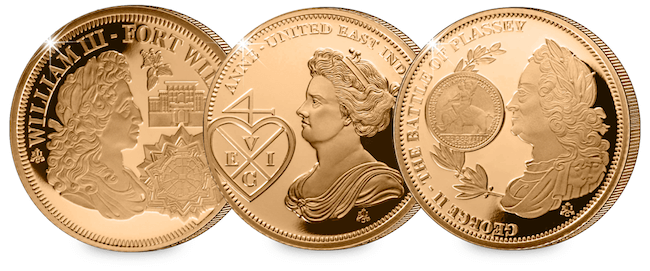
Coins from left: William III, Queen Anne and George II
The next three coins mark the reigns of William III, Queen Anne and George II and make symbolic reference to Fort William, the main garrison for the British in Calcutta, the Company ‘balemark’ (the heart shape used as a trademark for all Company goods) and the design of the 1758 shilling.

Coins from left: George III, William IV and Queen Victoria.
The final three coins pay tribute to George III, William IV and Queen Victoria. The George III coins pictures the famous ‘Spade Guinea’, whilst the William IV coin depicts the beading and lettering used on the Mohur – the Company’s own currency. Queen Victoria’s coin is graced by a Crown containing a precious jewel set by the East India Company, marking when Victoria became Empress of India.
Finished to an exceptionally high standard in a numbered luxury Presentation Case decorated with brass highlights, the collection truly represents the global resonance of The East India Company. With just 500 available The Empire Collection is one of the most impressive gold coin sets you are likely to see, and it is bound to become a future collector priority.
If you’re interested…
You can now own the Empire Collection, but with such a tiny edition limit, it won’t be available for long. Sign up below if you’d like to be contacted about owning this impressive gold coin set:

